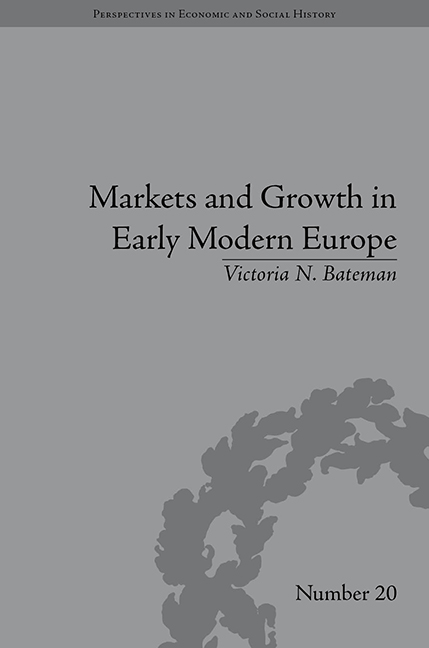Book contents
- Frontmatter
- CONTENTS
- List of Figures and Tables
- Acknowledgements
- Preface
- Introduction
- 1 Markets in History: A Survey
- 2 The Course of Early Modern Market Integration: Country-Level Results
- 3 The Course of Early Modern Market Integration: The Mediterranean and the North-West Region
- 4 Early Modern Market Integration in a Longer Run Perspective
- 5 The Causes of Early Modern Market Integration and Disintegration
- 6 The Consequences of Early Modern Markets: An Examination of the Relationship between Markets and Economic Growth
- 7 Conclusions and Implications for Economic Policy and the Modern Day
- Notes
- Works Cited
- Index
4 - Early Modern Market Integration in a Longer Run Perspective
- Frontmatter
- CONTENTS
- List of Figures and Tables
- Acknowledgements
- Preface
- Introduction
- 1 Markets in History: A Survey
- 2 The Course of Early Modern Market Integration: Country-Level Results
- 3 The Course of Early Modern Market Integration: The Mediterranean and the North-West Region
- 4 Early Modern Market Integration in a Longer Run Perspective
- 5 The Causes of Early Modern Market Integration and Disintegration
- 6 The Consequences of Early Modern Markets: An Examination of the Relationship between Markets and Economic Growth
- 7 Conclusions and Implications for Economic Policy and the Modern Day
- Notes
- Works Cited
- Index
Summary
Were market foundations significantly stronger in Europe on the eve of the Industrial Revolution than ever before? Until recently, the answer was a definitive yes. However, evidence of the existence of markets from as far back as ancient times now forces us to think more carefully about this question. Clearly, the very existence of markets does not rule out the possibility that they achieved a higher level of development in the seventeenth and eighteenth centuries, but we can no longer afford to assume that the greatest strides were taken in this period on the run up to the Industrial Revolution, as opposed to earlier and later. In order to provide a picture of the evolution of markets across the long run of history, this chapter looks to the formal measurement of market development in Europe across the long span of history, thereby allowing us to see the early modern period in much greater perspective.
The chapter begins by considering the new and exciting literature which has attempted to measure the extent of market development between Ancient times and the end of the medieval age, in an effort to gauge the extent of improvement early on in history. Using the market estimates which formed the basis of the previous two chapters, this chapter then goes on to measure the overall extent of market improvement between the close of the medieval era and the nineteenth century.
- Type
- Chapter
- Information
- Markets and Growth in Early Modern Europe , pp. 105 - 124Publisher: Pickering & ChattoFirst published in: 2014

